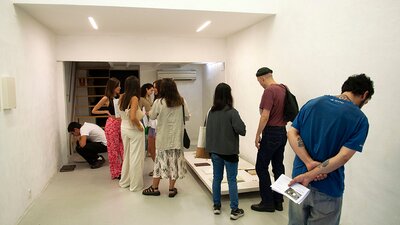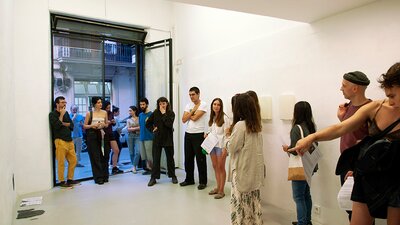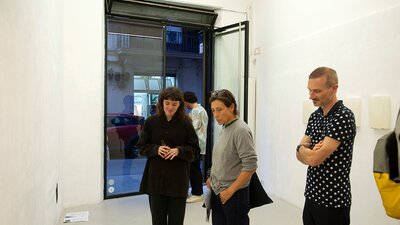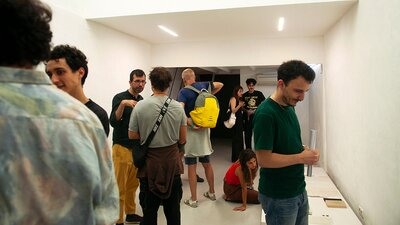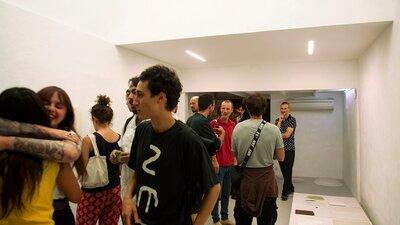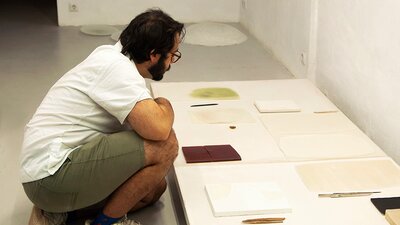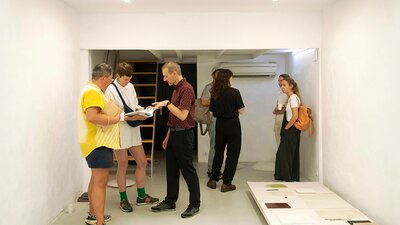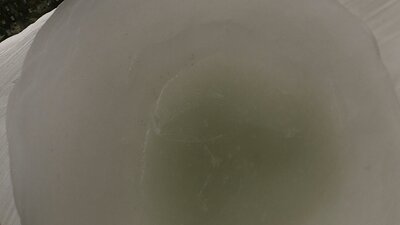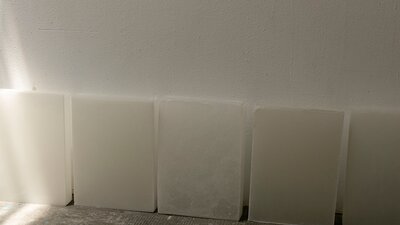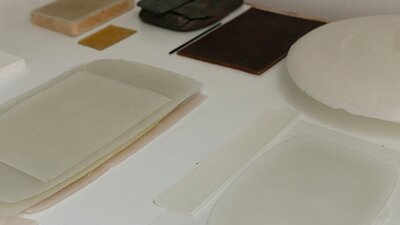invited
4th edition - 2024
2024
an uncertain vision
Helena Civit
Wax tablets were a widespread medium for writing throughout classical antiquity and the Middle Ages, even more sporadically until a few centuries ago. A thin layer of beeswax, which may have been pigmented with charcoal, was spread on a small wooden board, or often two of them joined together in the form of a diptych. This surface was then incised with a sharp tool, the stylus, the back end of which was usually flattened so that the marks could be erased and the tablet could be reused. Thus, the wax was a soft, flexible and portable medium on which to point with agility and erase again, collecting successive thoughts and data not destined for the millenary memory.
Una visión incierta gravitates around this waxy, viscous, vulnerable surface. The pouring of the liquid in sheets articulates a way of working. Gradually, the substance containing signs overflows, leaves behind its rigid support and barely supports itself.
Sticky materials, which stain, cover or impregnate: beeswax or its whitish simile, paraffin wax, gum arabic, rosin, graphite, bitumen, charcoal; in different genealogies they are vehicles of sign and trace. Here, they flow and solidify and remain without receiving this significant charge. The inscription that is not produced stresses the mute surface only as a latent power. Silence is sustained.
The tabula rasa, however, does not emerge as such – rather, the stillness reveals faint murmurs, sediment of time, accumulated marks of successive processes. They appeal to a sensitive approach, to an archaeological curiosity, to listening and to touch.
